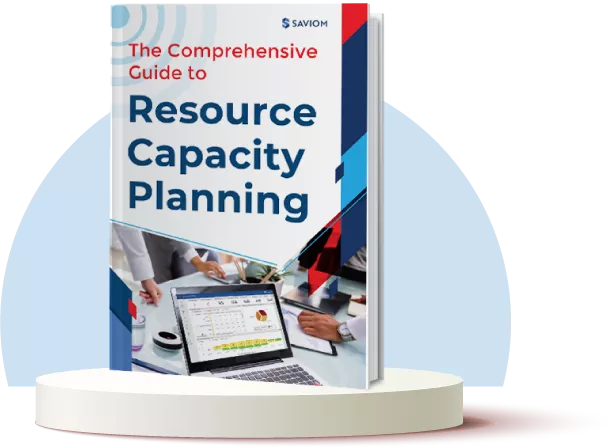Are you striving for optimal performance in your business operations?
Is your firm looking to enhance productivity and streamline processes effectively?
Are you struggling to maintain a competitive edge amidst rapidly changing market conditions?
A well-crafted operational strategy holds the key to these questions. It allows companies to effectively utilize their human, financial, and intangible/tangible resources to achieve greater operational efficiency and meet broader business goals.
Organizations equipped with an operational strategy are better equipped to handle evolving customer and market demands. It helps them foster a culture of continuous improvement and innovation in every aspect of operations, from supply chain management to customer service excellence.
In this blog, we will take a look at seven ways firms can create an effective operational strategy.
But before that, let’s look at its definition, components, types, and significance.
Keep reading.
What is an Operational Strategy?
An operational strategy is a detailed roadmap that outlines how the organization will optimize its processes and people to enhance product/service delivery, maximize profits, and achieve long-term business goals. It is a part of the overall business strategy.
The primary purpose of an operational strategy is to identify and rectify inefficiencies in order to improve day-to-day operations. It involves optimizing every facet of a product lifecycle, from the procurement of raw materials to the final logistics involved with delivering the product/service to the end user.
Components of Operational Strategy
A robust operational strategy in business includes several essential components that make it impactful. Let’s have a look at them –
Workforce Management
Workforce management is a systematic process of recruiting, training, and retaining skilled employees to ensure organizations are equipped with an optimized talent pool. It involves implementing well-defined policies and practices that enable businesses to improve employee productivity, reduce operational costs, and minimize compliance risks.
Process Management
Process management is a systematic approach to planning, optimizing, and monitoring organizational workflows and protocols. It entails analyzing existing workflows, identifying inefficiencies, automating repetitive tasks, and implementing emerging technologies to improve operational efficiency. This strategy facilitates standardization of internal processes, which helps businesses enhance and maintain consistency in delivery outcomes as well as minimize waste and unnecessary movement.
Quality Management
Quality management is an end-to-end process of analyzing and optimizing activities, tasks, and processes to maintain a desired level of quality in the services/products. It involves setting and monitoring quality standards and controls and ensuring every protocol follows the benchmark. Thus, quality management enables companies to address defects promptly, maintain product consistency, and enhance customer satisfaction.
Supply Chain Management
Supply chain management is the end-to-end process of monitoring and controlling the flow of goods, services, and information from organizations to end users. It involves managing all the phases of the supply chain, from planning and procurement to manufacturing and distribution. Effective supply chain management streamlines operations to ensure faster delivery and prevent costly inventory shortages or oversupply.
Equipment & Tools
Equipment and tools management is a systemic approach to managing the entire lifecycle of tangible and intangible assets, such as intellectual property, machinery, and technology, from procurement to final disposal. Proper equipment management prolongs the lifespan of these assets while ensuring optimal performance. This minimizes the downtime due to failures and breakdowns, thereby contributing to higher productivity and operational excellence.
Performance Management
Performance management is the continuous process of reviewing and optimizing employee performance. It involves setting and communicating employee goals, monitoring critical performance KPIs, and providing constructive feedback to improve the talent pool’s work potential. Organizations must develop comprehensive training and development plans that align employee aspirations with strategic business goals to maximize workforce productivity, engagement, and efficiency.
Facility Management
Facility management is a key business function that focuses on maintaining and optimizing the functionality, safety, and efficiency of physical workspaces and other organizational infrastructures. Adequate facility management supports productivity, reduces operational costs, and ensures compliance with regulations. Thus, it helps create a conducive environment for efficient day-to-day operations.
Now that you’re aware of the components, let’s move towards the different types of it –
Types of Operational Strategy
The operational efficiency strategy aims to position a company uniquely within the market. Below mentioned are the various types of it –
Cost Leadership Strategy
The cost leadership strategy is an operational model that focuses on reducing the cost of production and offering products/services at the lowest price point. This strategy involves optimizing production processes, leveraging economies of scale, and reducing overhead costs. Implementing a cost leadership strategy enables companies to attract price-sensitive customers and gain a larger market share.
A budget airline that offers tickets at a lower cost by trimming down complimentary services demonstrates a perfect cost leadership strategy in action.
Quality Improvement Strategy
The quality improvement strategy focuses on enhancing product/service quality to achieve operational excellence and higher customer satisfaction. It involves identifying inefficiencies and making continuous improvements in functional and operational areas. Making these incremental enhancements in processes helps businesses to increase product/service competency and, in turn, elevate customer experience and maximize revenue.
Healthcare facilities introducing new protocols to reduce medical errors and hospital-acquired infections for improved patient safety is a real-life quality improvement strategy example.
Flexibility Strategy
The flexibility strategy focuses on improving an organization’s ability to adapt quickly to dynamically changing market conditions, customer preferences, and other environmental factors. This strategy allows businesses to get rid of embedded protocols that impede response time and fast decision-making. Moreover, it enables companies to develop versatile processes, implement agile practices, and maintain a flexible workforce to beat market volatility.
An example of this strategy would be clothing retailers that swiftly adjust their inventory based on seasonal trends and customer demand.
Speed or Time-Based Strategy
The speed or time-based strategy focuses on accelerating the entire product lifecycle to expedite the time it takes to deliver the final outcome to the end user. This strategy enables companies to cut down on waste and unnecessary movements using lean principles. Furthermore, it empowers businesses to maintain a competitive edge by making them more responsive to customer needs.
For instance, fast food chains can optimize their logistics to ensure quick order processing and delivery, thereby enhancing customer service and loyalty.
Innovation Strategy
The innovation strategy is a structured roadmap that allows companies to develop new products and services that deliver more value to their customers. Successful innovation requires businesses to invest significantly in R&D to understand customer points and gaps in the market to design breakthrough products and services. It helps companies differentiate themselves from the competitor and capture new markets.
For example, smartphone companies routinely upgrade their devices with new features to boost sales, attract new audiences, and beat the competition.
Service Excellence Strategy
The service excellence strategy aims to optimize the organization’s ability to meet or exceed customer expectations. This involves training customer service personnel, implementing feedback systems, and continuously improving product/service delivery. Exceptional service can lead to increased customer loyalty and lower churn rates.
Hotels that offer personalized services and prompt assistance to elevate customer experience are the perfect example of a successful service excellence strategy.
Capacity Strategy
The capacity strategy focuses on ensuring that a company can efficiently meet current and future demand while avoiding inventory excess or shortage. This involves planning and managing production capacity, scaling operations, and investing in requisite infrastructure. A robust capacity ensures timely fulfillment of customer orders, reduces bottlenecks, and supports business growth without compromising quality or service.
Manufacturing firms continuously adjust their production to efficiently manage customer demand and minimize delays or wastage.
Read more: What is Resource Capacity Planning? An Ultimate Guide for Every Project Manager
Outsourcing Strategy
The outsourcing strategy involves delegating specific operational or functional processes to third-party vendors to reduce labor costs. It allows businesses to focus on their core competencies and improve operational efficiency. To outsource work, companies need to identify reliable partners, negotiate contract terms, and establish separate compensation structures for permanent and contingent workers. This strategy can lead to faster turnaround times and increased competitiveness.
For example, IT companies regularly outsource customer service operations to low-cost locations to reduce expenses and ensure high-quality technical assistance.
Importance of Operational Strategy
A solid operational strategy is the bedrock of a successful business. It helps businesses improve operational efficiency by reducing process waste and maximizing the utilization of resources such as people, finance, equipment, infrastructure, and digital assets. Subsequently, it enables companies to control costs and enhance profit margins.
With efficient operations, businesses are able to function with shorter turnaround times and accelerated service delivery. When coupled with rigorous quality control measures, it allows companies to consistently offer top-tier products and services at competitive prices to their customers. This combination of efficiency, quality, and value-driven pricing elevates customer satisfaction and retention.
All these factors cumulatively translate to better revenue generation and profitability. Besides, a well-rounded operational strategy provides a structured approach to innovate and improve the entire product lifecycle. This allows businesses to respond swiftly to market changes and competitive pressures.
Effective Steps for Creating a Winning Operational Strategy
Creating a winning operational strategy in business involves carefully crafting a series of steps to optimize processes and align organizational goals with market demands. Let’s have a look at them:
Define SMART Objectives and Goals
The first step is analyzing the ultimate objective of an operational strategy- whether it’s to improve process efficiency, enhance product quality, reduce time/cost, drive growth, or a combination of them. Once the goal is set, it’s time to define the SMART parameters, which will ensure that the targets are achieved within the pre-defined criteria.
Conduct a SWOT Analysis
PMI states, “With a SWOT analysis, you also can ensure that your decisions will enable you to support the most profitable projects at the opportune time.”
The second step is conducting a SWOT analysis to evaluate the company’s current processes and identify inefficiencies that’s impeding productivity. This in-depth analysis provides valuable insights that help companies determine which business areas would require significant improvements to achieve the operational goals.
Establish Operational Priorities, Timelines, and Milestones
In the next step, firms must create a roadmap that clearly outlines the operational priorities, timelines, and milestones. This helps stakeholders to identify and prioritize key performance areas that will create the most impact on operational and business efficiency.
Allocate Appropriate Resources Effectively
The next step is to appropriately allocate business resources to meet the operational goals. This involves:
- Conducting thorough assessments to understand the resource requirements
- Prioritizing resource distribution based on organizational objectives
- Allocating human, non-human, and financial resources accordingly
- Implementing a flexible allocation system to adapt to changing priorities
- Regularly monitoring and adjusting resource allocation
Read more: What is Resource Allocation? A Comprehensive Guide for Project Success
Implement Technology Solutions
Next, firms must implement technological solutions to automate internal processes and workflow. It helps businesses to reduce human intervention, optimize resource usage, and save costs. Furthermore, they can leverage analytics software to gain real-time insights into their operations. This helps companies to rectify inefficiencies, make data-driven decisions, and improve overall performance.
Regularly Track KPIs and Mitigate Bottlenecks
Businesses must track KPIs regularly to ensure that the company’s performance aligns with its strategic goals. By doing this, organizations can swiftly identify bottlenecks and take course-corrective measures to mitigate them. Thus, it enables companies to cut down their losses and further optimize processes.
Review and Regularly Update the Operational Strategy
Lastly, firms must review and update the operational strategy to keep it relevant and effective. Periodic reassessment is crucial as market conditions, technologies, and organizational goals evolve. This allows necessary adjustments to address new challenges and upcoming opportunities.
Conclusion
An operational strategy is a blueprint that enables organizations to maximize business efficiency through process, resource, and time optimization. Now, depending on business requirements, goals, and market conditions, companies can use a combination of different operational strategies to achieve the best results in the most optimal way. Implement the aforementioned steps to create the best-fit operational plan for your organization and reach new heights.
The Glossary
Read more: Glossary of Resource Workforce Planning, Scheduling and Management
The SAVIOM Solution
SAVIOM is undoubtedly the market leader in offering the most powerful and configurable Enterprise Resource Management Solution. Having more than 20 years of experience, this Australian-based MNC has a global presence in over 50 countries. It is also popular with more than 100 customers and helps them to achieve their business goals. SAVIOM also has products for project portfolio management, professional service automation, and workforce planning software which can be easily customized per business requirements.










